George was up at 04:30am to have the nets in the garden open by 05:00 - today's very calm weather was perfect for ringing, there weren't a great deal of birds around though, so between net rounds George started writing up the data from his burrow checks. A Sedge Warbler was probably bird of the morning in the nets - full totals will be at the bottom.
Sam headed out to the Northern recording area to do the morning census and stopped off at Nant first; five Spotted Flycatchers were busy feeding around the perimeter and two Collared Doves were in Ty Capel withy - it'll be interesting to keep an eye on these and see if they're up to anything. Also at Nant was the first fledgling Song Thrush of the year, these were extinct as a breeding species from 1967-2017 and then they have bred every year since, and including, 2018.
Spotted Flycatcher at Nant
The Withies were a little quieter with a further three Spotted Flycatchers and three Sedge Warblers for company. A brood of Meadow Pipits had fledged from beside Plas Withy and their parents were busy ferrying food to all four of them. A Willow Warbler was still singing away from in Cristin Withy, as with the Collared Doves, it will be interesting to see if this attempts to breed this year as they are only an occasional breeder on the island.
Early afternoon saw Sam and George head out to crack on with some more of the Manx Shearwater census, between them, another 250 burrows were counted today, they had to pack in early-ish though as a trip round to the East Side of the Island to monitor the seabirds was planned.
We headed round from Pen Cristin to count the seabird colonies at the Southern End of the East Side - we first stopped in the Herring Gull colony below Pen Cristin. There were a few chicks hatched in the area we viewed the cliffs from, and we found a few Shag nests from here, too. A Puffin flew out of a burrow nearby where we were standing too and stood below, always a stunning bird to see up close.
Puffin on Pen Cristin
two Herring Gull chicks in the Pen Cristin colony
A Shag on a nest at Pen Cristin
This Shag was ringed a little further along the coast in the nest at Barcut in 2010!
Kittiwakes on the nest at Tornado Ledge.
Razorbill at the Nest site at Tornado Ledge
The "Little Kitt Colony"
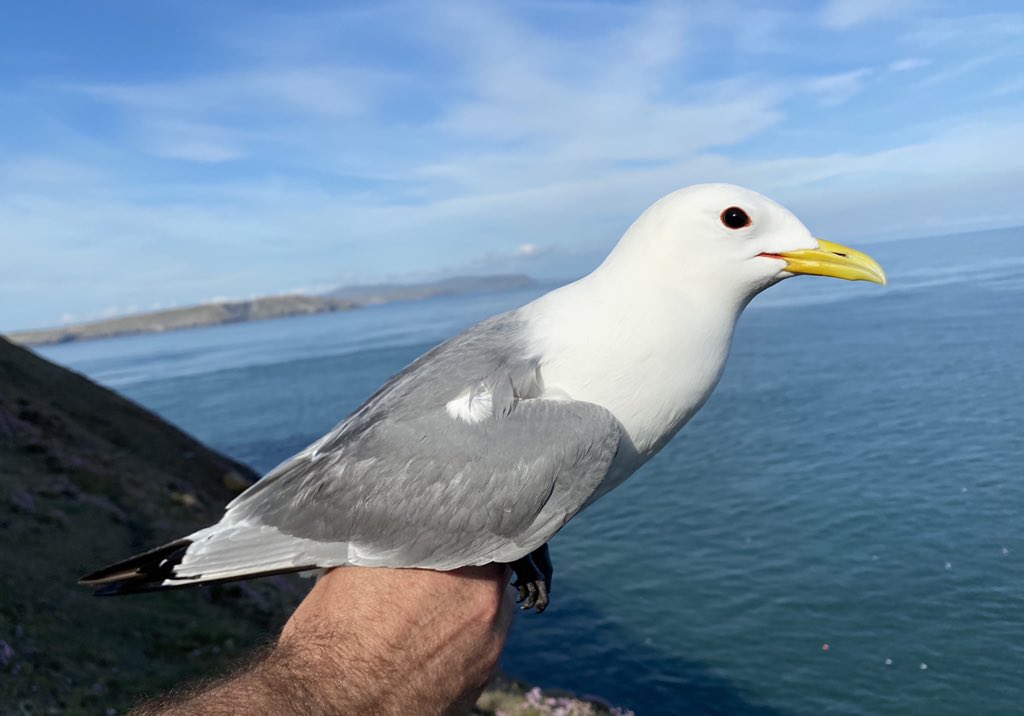
Adult Kittiwake
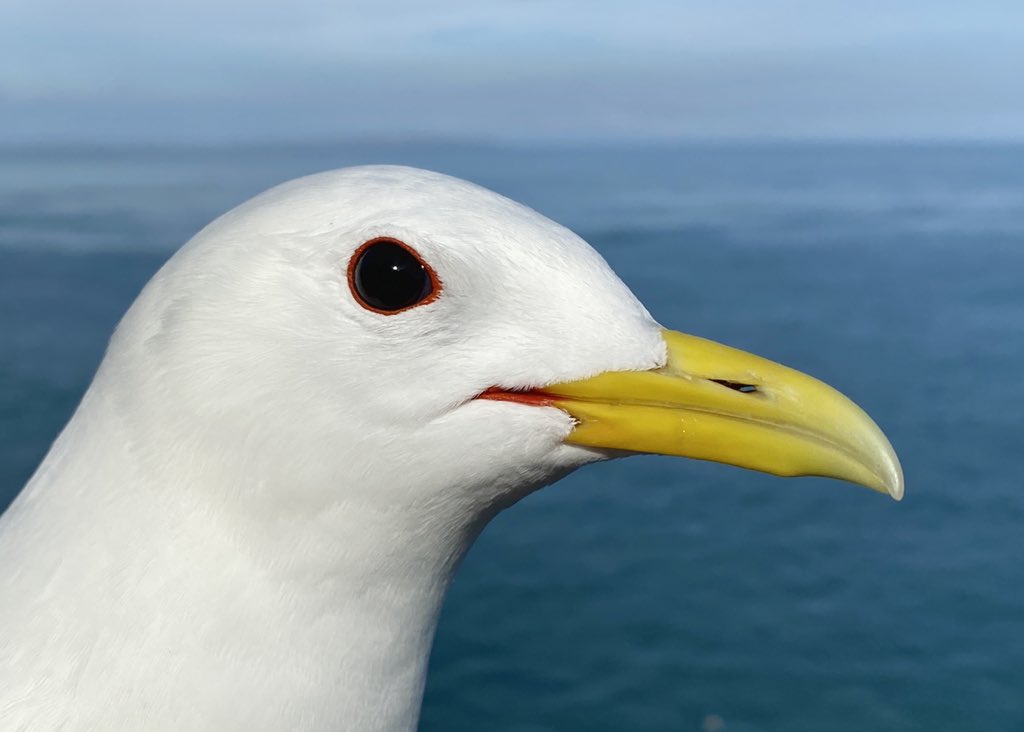
a photo showing the red orbital ring quite well
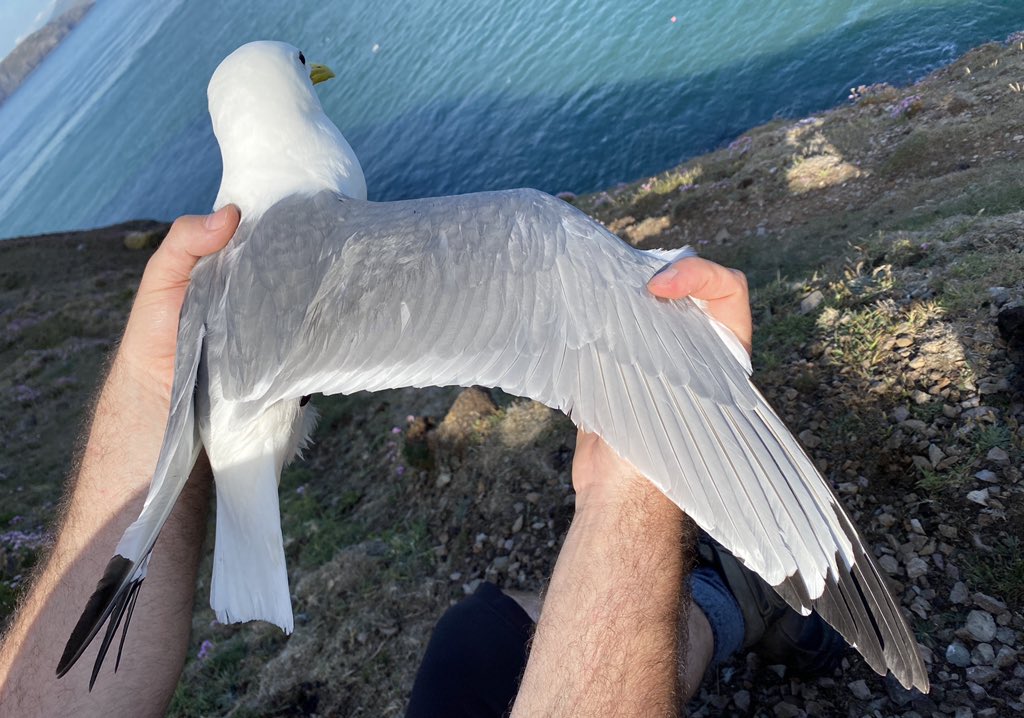
The scientific name fir Kittiwake is Rissa tridactyla. The genus name Rissa is from the Icelandic name Rita the name of this species, and the specific tridactyla is from Ancient Greek tridaktulos, "three-toed", from tri-, "three-" and daktulos, "toe"
Ringing today produced Goldfinch 6, Stonechat 3, Chiffchaff 1, Blackbird 2, Sedge Warbler 1, Kittiwake 2. Total 15 birds of 6 species.


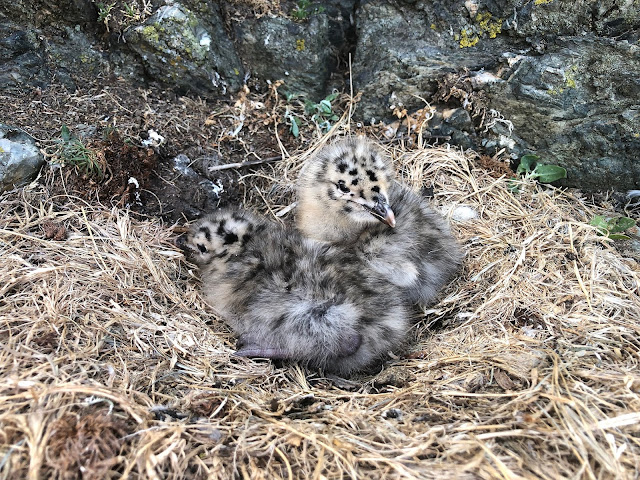



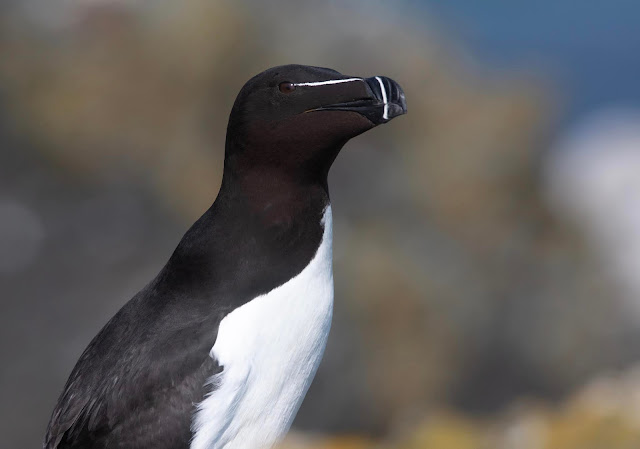

No comments:
Post a Comment